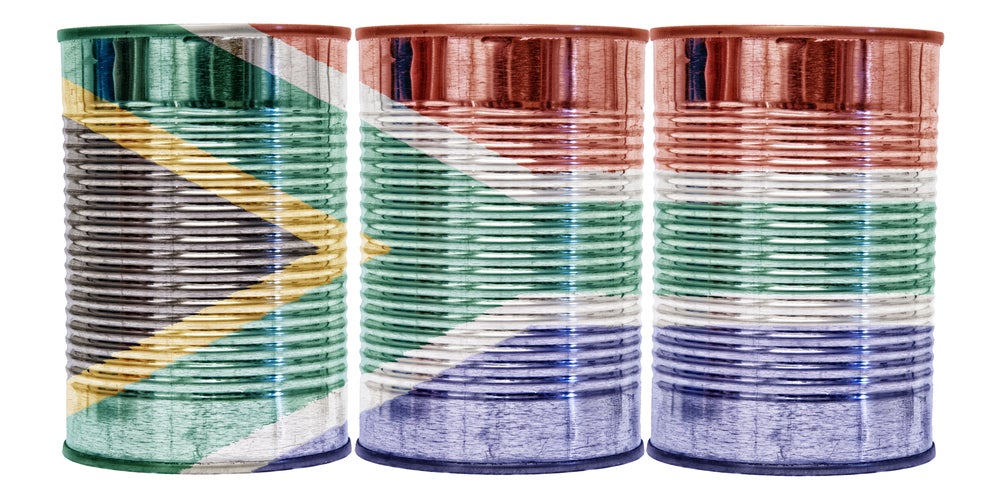
The packaging industry in South Africa is on the cusp of remarkable growth. The market size was valued at 44.2 billion units in 2022 and is anticipated to register a CAGR of more than 2% during 2022-2027.
Several key drivers and factors are steering this growth, making the South Africa packaging market a promising sector for both investors and industry players.
Driving forces behind market growth
Several crucial factors are propelling the South Africa packaging market towards its promising trajectory.
One of the primary drivers of this growth is the increase in disposable income among South African households. In 2021, the average disposable income reached ZAR 50,000 (USD 2756.22), marking an improvement from the previous year’s ZAR 47,830 (USD 2636). This increase in disposable income has led to a growing demand for convenient food products, which, in turn, stimulates the fresh food packaging market.
As urbanisation and mobility become the norm in South African society, there’s a notable shift towards smaller packaging formats, particularly multipacks. This trend presents significant opportunities for manufacturers to encourage brand switching. Additionally, retailers find these smaller packs appealing as they save valuable shelf space and rely on attractive packaging to enhance sales.
Urbanisation, combined with a heightened awareness of health and wellness, has led to an uptick in the consumption of various products, including food and beverages—both alcoholic and non-alcoholic. This surge in consumption has resulted in a growing demand for diverse packaging solutions, including glass containers and bottles.
Despite the overall growth, the South Africa packaging market faces challenges. Concerns about the environment and recycling have gained prominence, leading to an increased demand for sustainable packaging solutions. Rising raw material prices for alternative packaging options also contribute to this shift towards sustainability.
The COVID-19 pandemic had a profound impact on South Africa’s food supply chain and processing. Lockdown restrictions disrupted manufacturing and logistics activities, except for essential products and services, causing a reduction in demand for packaging solutions. Furthermore, the challenges associated with food production and distribution altered the food consumption patterns of households, negatively affecting the packaging market.
South Africa packaging market trends
Several notable trends are shaping the South Africa packaging market.
South Africa’s urbanisation trend, driven by economic expansion, has resulted in a higher demand for ready-to-eat meals. This shift towards urban living, coupled with busy lifestyles, has boosted the market for bags and pouches-based packaging solutions.
Major global beauty and cosmetics companies are tapping into the industry’s potential growth in Sub-Saharan Africa. Factors such as a burgeoning population expected to double to 2.4 billion by 2050, a rising middle class, and increased urbanisation have positioned South Africa as the “next frontier” for the beauty market.
In Sub-Saharan Africa, the number of people aged between 12 to 24 has steadily risen. This demographic segment tends to spend more on beverages, both alcoholic and non-alcoholic, and on-the-go food, further fuelling the demand for packaging solutions.
As the trend shifts towards smaller families and urban living with limited storage space, consumers are increasingly valuing space-efficient packaging. Carton packaging has emerged as a suitable solution due to its efficiency in maximising logistical performance.
Food and beverage industry driving growth
The South African government is actively prioritising the food and beverage sector, a critical component of the country’s manufacturing industry.
This focus has led to innovations in sustainable and customised flexible packaging solutions, which, in turn, have fuelled the packaging market’s growth.
For instance, in May 2021, Huhtamaki, a leading manufacturer of sustainable packaging solutions, announced its plans to establish a new manufacturing unit in KwaZulu-Natal, South Africa.
This facility aims to serve existing and new egg packaging customers with locally produced solutions, capitalising on its proximity to one of South Africa’s main export ports for competitive exports to East Africa.
Furthermore, evolving consumer preferences have played a significant role in the market’s dynamics. The demand for products such as energy drinks is on the rise, while the beer market has witnessed a shift towards low and non-alcohol beers, along with craft beers.
Quality has taken precedence over quantity, particularly with the premiumisation trend. Additionally, the removal of all alcohol sales restrictions in January 2022 is expected to boost alcohol sales, positively impacting the glass packaging sector.
Retail sales in South Africa have also seen rapid growth, with the food retail sector expanding significantly. According to the US Department of Agriculture, in 2021, South African retail food sales reached USD 40 billion as the country’s economy recovered from the impact of the Covid-19 pandemic.
South Africa packaging industry players
The South African packaging market is characterised by its fragmentation, with numerous players vying for market share. These major players, holding significant market share, are strategically expanding their customer base worldwide and implementing initiatives to enhance their market share and profitability.
In October 2022, ALPLA Group, an Austrian plastic packaging and recycling firm, consolidated its five previous South African facilities into a newly opened production site near Johannesburg. This facility, valued at USD 50 million, spans 35,000 square meters, housing production, administration, and storage spaces.
In July 2022, Ardagh Glass Packaging announced a ZAR 1.5 billion (USD 95 million) expansion of its Nigel production facility in Gauteng, South Africa. This investment, doubling the facility’s capacity, aims to support the growing demand for sustainable glass packaging and incorporates energy-efficient and environmentally beneficial features.



